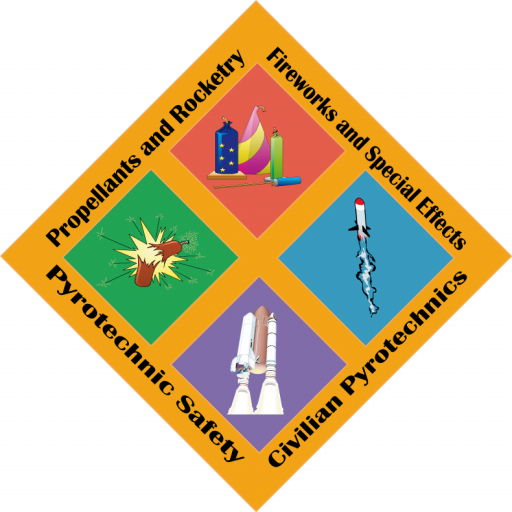K. L. Kosanke I recently needed an estimate of the amount of lift powder that would have to be missing from a spherical aerial shell, for it to remain in its mortar upon firing. Since that apparently has never been reported in the literature and because it was easy to determine, a brief study was …
Continue reading Lift Charge Loss for a Shell to Remain in Mortar
Category:Free to Download
Articles etc that are FREE to download
Chapter 1 — Preface
The beauty of fireworks arises from their creation of organized patterns, mainly of fire, that consist of colors, lines and their movement and change in space and time. Chrysanthemum shells, also called ‘warimono’ (which means hard-breaking shell’), produce uniquely beautiful effects by creating patterns resembling chrysanthemums on the background of the sky. Until now, the …
Continue reading Chapter 1 — Preface
Electric Ignition of Shock Tube Firing Systems
K.L. Kosanke NOMATCH™ is a new system for igniting fireworks that replaces quick match with shock tube plus flame-to-shock (or electric-to-shock) and shock-to-flame attachments. The system was introduced by B & C Products, Inc., with a press release included in the July 1994 Issue of American Fireworks News, an article in the July 1994 issue …
Continue reading Electric Ignition of Shock Tube Firing Systems
Successful Bidding and Performance on Government Fireworks Display Contracts
K.L. and B.J Kosanke Over the years the authors have had experience with government contracting from both sides: in selecting and monitoring contractors for the government and as holders of government contracts. In this article we would like to share some general information about contracting with the federal government and about contracting for fireworks displays …
Continue reading Successful Bidding and Performance on Government Fireworks Display Contracts
Explosions and Detonations
K.L. Kosanke The proper use of technical and scientific terms is fundamentally important for clear and effective communication. It is also a mark of a professional to use the vocabulary correctly. Toward that end, the following brief article is offered. There are a series of notes [a–e] included for additional and qualifying information at the …
Continue reading Explosions and Detonations
A Rule for Improving Manufacturing Safety
K.L. and B.J Kosanke Over the years there has been an almost continuous series of accidents involving people using energetic materials, too many of which involve fireworks, their manufacture or their preparation for use. There are important lessons that can be learned from these accidents; unfortunately most of these come too late for the people …
Continue reading A Rule for Improving Manufacturing Safety
Electric Matches: Effective Thermal Output
K.L. and B.J Kosanke Introduction: A study of electric match sensitiveness and performance has recently been completed, and a summary of the results is being presented as a series of short articles. This is the ninth article in the series[1] and presents the results of tests to determine the effective thermal output for the same …
Continue reading Electric Matches: Effective Thermal Output
Fire Sculptures Using FireRope
K.L. and B.J Kosanke Fire sculptures are not a true pyrotechnic effect, being produced simply by the burning of a liquid fuel in air. Nonetheless their use can contribute rather nicely to firework displays that include ground effects. Fire sculptures form continuous images in yellow fire that burn for 10 minutes or more. This is …
Continue reading Fire Sculptures Using FireRope
Pyrotechnic Accelerants
K.L. Kosanke Conventional accelerants used in arson crimes, such as gasoline, readily burn in air producing flame temperatures of about 3000 °F. Yet these accelerants generally lack the ability to produce major involvements in short times. This is because, like most combustion reactions, they must rely on a continuing supply of air to provide the needed …
Continue reading Pyrotechnic Accelerants
Pyrotechnic Fuse Burn Rates
K.L. and B.J. Kosanke Over the years, we have had occasion to work with a fairly large number of different fuse products. One of the more important characteristics of a pyrotechnic fuse is its burn rate, but often that is not specified by the supplier. Thus, when we have had a large enough supply of …
Continue reading Pyrotechnic Fuse Burn Rates
